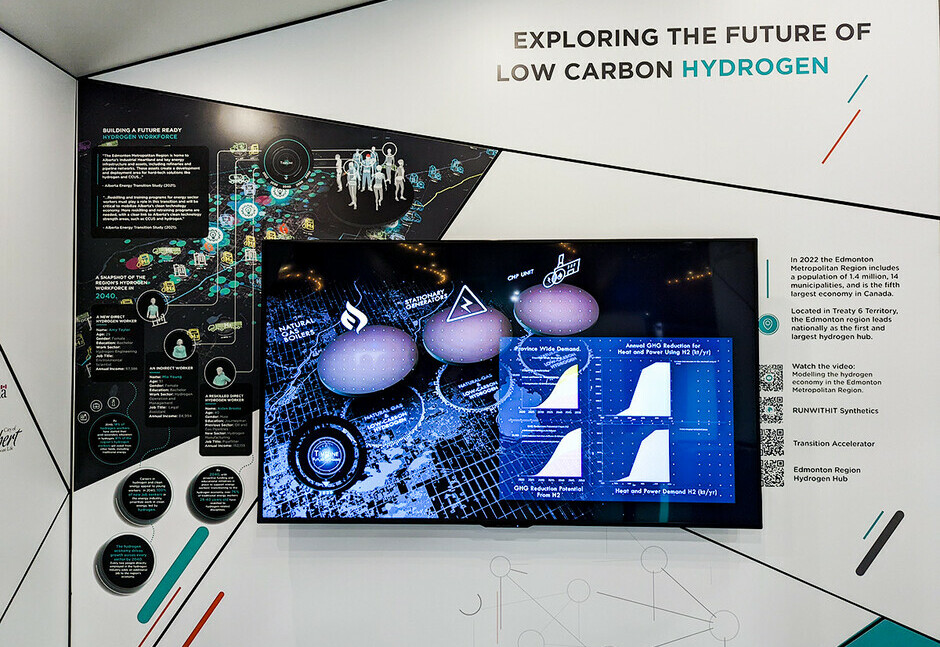
Hydrogen is touted as the energy source of the future, and for a good reason. It's clean, efficient, and abundant.
The market is experiencing rapid growth as governments and businesses worldwide explore the potential of hydrogen as a clean and sustainable energy source. Engineers, designers, and oilfield professionals must stay up-to-date on the latest advances in this rapidly-growing industry.
In this blog post, we'll take a brief and general look at the current state of the hydrogen market and explore some key factors and challenges shaping its future.
The Market at a Glance
Dominating hydrogen production appears to be fuel reforming. Fuel reforming is a part of fuel processing where a catalytic conversion of hydrocarbon fuels (fossil or renewable) to a hydrogen-rich mixture takes place. This reforming reaction mainly produces carbon monoxide and hydrogen. The USA produces ninety-five percent (95%) of its hydrogen through natural gas reforming in large central plants. However, expect this to change in the coming years as renewable energy sources are increasing in use for hydrogen production. By 2030, an estimated 30% reduction in hydrogen production costs sourced from renewable electricity will drive a dramatic increase in the market (1).
As the hydrogen market grows, companies are beginning to invest in the infrastructure to support it. Infrastructure includes hydrogen production facilities, storage, and distribution networks. Developing this is critical to the future success of the hydrogen market.
What are the Key Challenges Facing the Hydrogen Market?
The hydrogen market is in its infancy and needs to address several challenges before it can reach its full potential.
1) Infrastructure:
In contrast to the overwhelming drivers helping the market grow, key challenges include a need for more infrastructure. Few refueling stations exist, and pipeline, production, and storage facility networks are limited. As the global demand for hydrogen increases, the challenge will be ensuring the supporting infrastructure will be in place.
2) High Costs:
High costs present another challenge facing the hydrogen market. In addition to the costly infrastructure needed to meet demand, the rising costs of hydrogen-related technology will play a large part in how and where hydrogen will advance.
3) Public Awareness:
A lack of public awareness makes building support for a hydrogen economy difficult. While discussions and education on climate change and renewables have become mainstream in recent years, a severe lack of awareness focuses on hydrogen.
What are the Key Drivers of the Hydrogen Market?
Hydrogen is a pillar for energy and decarbonization goals worldwide, and as the world shrinks through interconnectivity, the need for sustainable renewable energy grows. If we ONLY look at the key drivers, hydrogen would undoubtedly take the checkered flag in the 21st-Century energy race.
1) Need for Sustainable Energy Sources:
One of the most critical factors driving the hydrogen market today is the need for cleaner and more sustainable energy sources. With the world increasingly focused on carbon futures and reducing emissions, hydrogen presents an attractive option.
2) Potential as a Storage Medium:
Another key driver is the growing recognition of the potential of hydrogen as an energy storage medium. When used in conjunction with renewables, such as wind and solar, hydrogen can help to create a more balanced and reliable energy system.
3) Demand for Metallurgical Coke:
Driving the growth of hydrogen production is an increase in the demand for metallurgical coke from the steel industry, a boost in the cement and power generation industries, and an increase in the global supply of heavy fuel oil. The falling cost of hydrogen production makes it increasingly viable as a commercial energy source.
4) Government Incentives & Transportation Industry:
Favourable government initiatives to create a sustainable future will support the transportation industry's moving toward hydrogen fuel sources. The sector, which currently contributes only a tiny portion of global hydrogen demand, has the potential to be one of the most promising for hydrogen technology development. Heavy reliance on petroleum products and a lack of low-carbon options for many applications will drive the advancement of hydrogen technology.
With the right policies in place, hydrogen could play a significant role in the global energy mix in the years to come.
Conclusion
Hydrogen has become a commodity, used as a feedstock in various industrial applications, from refineries to ammonia and methanol production. Global demand for pure hydrogen has increased from less than 20 MT (metric tons) in 1975 to over 90 MT in 2021 (2).
Net Zero by 2050 is being heard around the globe as more and more countries aim for carbon neutrality. These net-zero pathways will align with increasing global hydrogen demand to 140 MT by 2030 and over 650 MT by 2050 (3).
Despite the challenges, the hydrogen market is growing, and the development of applications for new technology is a catalyst. This call to action is answered by the talented team here at Argus, and our determination to position ourselves as an integrator at the forefront of innovation, viewing research and development projects through the lens of repeatable manufacturing.
Reach out with your hydrogen thoughts or opportunities anytime!
nolan.callander@argusinnovates.com
Nolan Callander - Business Development Specialist
(1) Hydrogen Council. 2022. Global Hydrogen Flows. October 5. Accessed March 2023. https://hydrogencouncil.com/en/global-hydrogen-flows/
(2) International Energy Agency. 2019. https://www.iea.org/reports/the-future-of-hydrogen. June. Accessed March 2023. https://www.iea.org/
(3) Office of Energy Efficiency & Renewable Energy. N/A. https://www.energy.gov/eere/fuelcells/hydrogen-production-natural-gas-reforming. Accessed March 2023.





